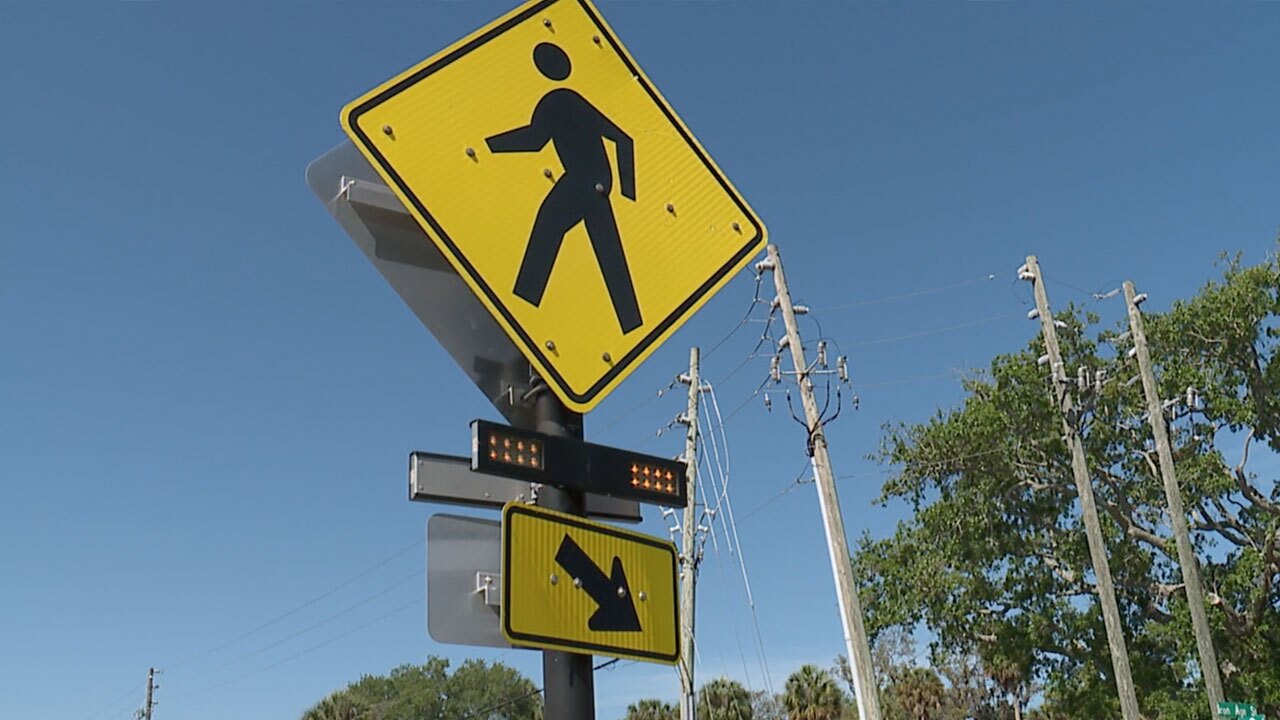PINELLAS COUNTY, Fla. — Florida is one of the most dangerous places in the nation for pedestrians. Two companion bills in the House and Senate are making their way through the statehouse to keep you safe when you cross the street. Yet, some local transportation leaders worry the bills could have unintended consequences and could actually put all of us in more danger.
Leighann Carbery of Safety Harbor is thankful for the yellow flashing crosswalks in her neighborhood. Her kids are so used to using them that they argue over who gets to push the button.
“It’s kinda like I get to push it on the way there, and I get to push it on the way back. We use them all the time,” she said with a chuckle.

She says, for the most part, drivers see them and stop.
“I don’t know if that’s a problem in other places, but here in this area, they stop every time,” she elaborated moments after crossing South Bayshore Boulevard.
The rectangular flashing beacons, which flash yellow once you activate them, have become a popular option for crosswalks between traffic signals. There are 1,800 across Florida and 350 in Pinellas County alone.
Now, two Florida lawmakers are on a mission to change the blinking yellow lights to red lights after a 12-year-old girl was hit and killed in a similar crosswalk in Brevard County. The bills, House Bill (HB) 1113 and Senate Bill (SB) 1412, say if the lights can’t be changed to red, then the yellow lights need to be removed, which would leave crosswalks without any blinking lights.
Whit Blanton of Forward Pinellas says that’s worrisome.
“It is disappointing that we were just named as one of the most dangerous states in the country for pedestrian fatalities, and that’s not getting any better if you remove these devices,” he explained.
Just how effective are they?
The Federal Highway Administration recently studied the flashing beacons and found at the intersections where they were installed, pedestrian crashes went down 47%.
A 2010 FHWA study in St. Petersburg and two other pilot cities found that at intersections where RRFBs were constructed, driver compliance rose from zero percent before installation to between 72% and 96% afterward.
Representative Randy Fine, who is sponsoring the house bill, tells ABC Action News he believes the yellow flashing lights are confusing and drivers don’t know that they have to stop, adding that it gives pedestrians a false sense of safety.
“For 100 years, we’ve taught drivers that red means stop and yellow doesn’t. Yet, in this one type of flashing light that led to the death of Sophia Nelson and others around Florida, people have been run over because they went into an intersection thinking they were safe, and cars just mowed them down because they weren’t told to stop,” he explained.

That’s what happened in the case involving 12-year-old Nelson. Investigators say an 83-year-old driver fatally struck her as she tried to cross State Road A1A in Satellite Beach. Although the closer lanes of traffic stopped, the outside driver did not. That driver, Jo Anne Stanker, told police she did not see the girl.
“What pedestrians don’t understand is that they’re taking their lives into their hands when they go into the intersection, and there’s a false sense of safety that cars are being told to stop. If we want people to stop, the flashing light should flash red and not yellow. It’s a very simple bill,” Fine added.
Blanton added that the yellow flashing beacons are not perfect, and pedestrians still need to be cautious, but that they protect walkers and bikers more often than not.
“Not everybody stops. I’ve had to yell at a couple of people who didn’t stop, but as a pedestrian or bicyclist, you know not to just ride out into the street,” he explained.
Forward Pinellas opposes the bills, arguing they would undo nearly two decades of progress toward improving pedestrian safety.
The bill could greatly impact all of us, with dozens of the flashing yellow beacons planned for installation soon across Tampa Bay.



